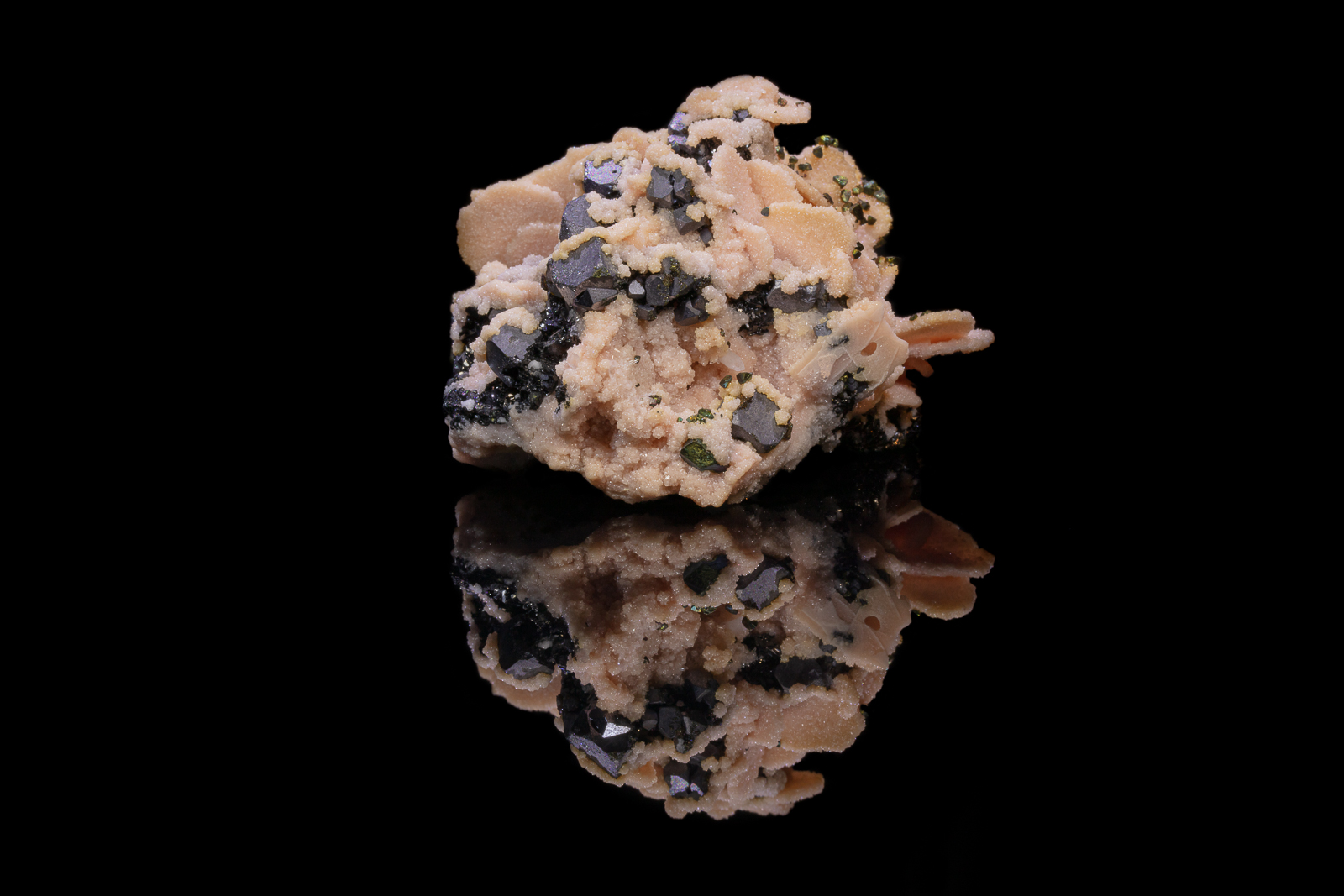Rhodochrosite
Formula: MnCO3
Species: Carbonates
Colour: Pink, rose, red, yellowish-grey, brown, white, gray; colourless to pale rose in transmitted light.
Lustre: Vitreous, Pearly
Hardness: 3½ – 4
Specific Gravity: 3.7
Crystal System: Trigonal. Rhombohedral and scalenohedral crystals; also commonly bladed, columnar, stalactitic, botryoidal, granular or massive. Crystal twinning is often present.
Member of: Calcite Group, Calcite-Rhodochrosite Series and Rhodochrosite-Siderite Series.
Name: Named in 1813 by Johann Friedrich Ludwig Hausmann from the Greek ρόδο, “rose”, and χρώς, “coloring”, referring to its color.
Type Locality: Cavnic Mine (Kapnikbánya), Cavnic, Maramureș County, Romania
It is often confused with the manganese silicate, rhodonite, but is distinctly softer. Commonly occurs as a primary gangue mineral in moderate- to low-temperature hydrothermal veins, also in high-temperature metasomatic deposits and sedimentary manganese deposits or as a late stage hydrothermal mineral in pegmatites, especially lithiophilite-bearing ones.
Rhodochrosite forms a complete solid solution series with iron carbonate (siderite). Calcium frequently substitutes for manganese in the structure leading to lighter shades of red or pink.
Rhodochrosite is mainly used as an ore of manganese, which is a key component of low cost stainless steel.
Gem-quality crystals of Rhodochrosite occur in several mines in Colorado and South Africa. These are sometimes cut for collectors but as rhodochrosite is both soft and very fragile, faceted stones are rare and demand great skills from the cutter.
Rhodochrosite is Argentina’s “national gemstone”. Colorado officially name it as the state mineral in 2002.


 Copyright Charles Camarda - www.camardavisualstudio.com
Copyright Charles Camarda - www.camardavisualstudio.com Copyright Charles Camarda - www.camardavisualstudio.com
Copyright Charles Camarda - www.camardavisualstudio.com